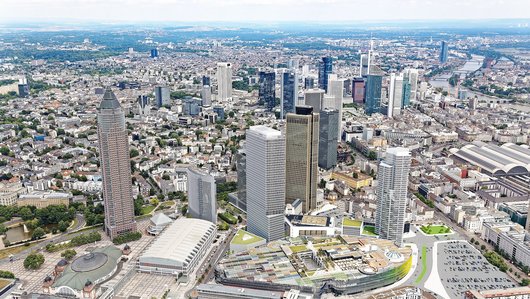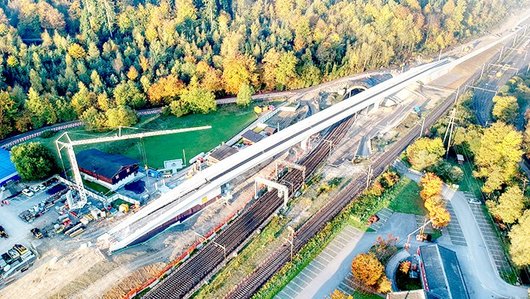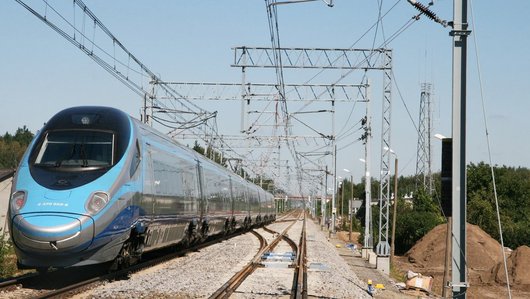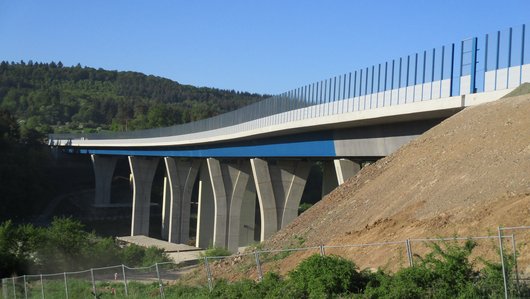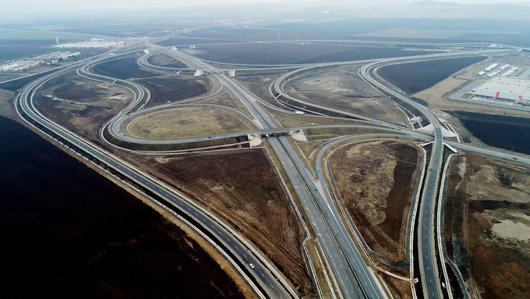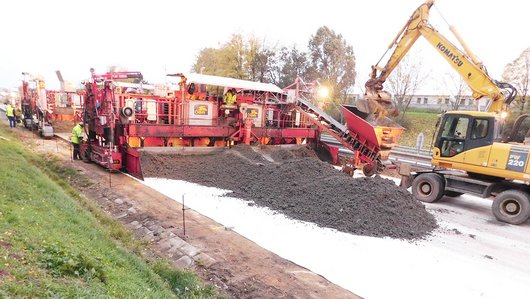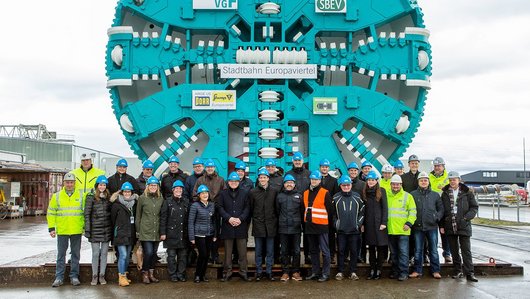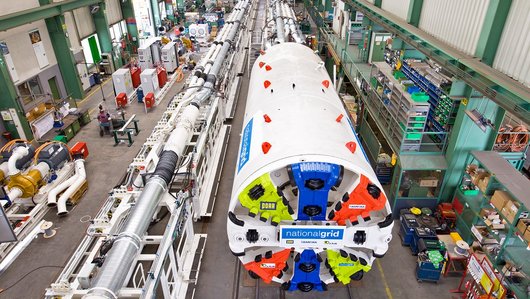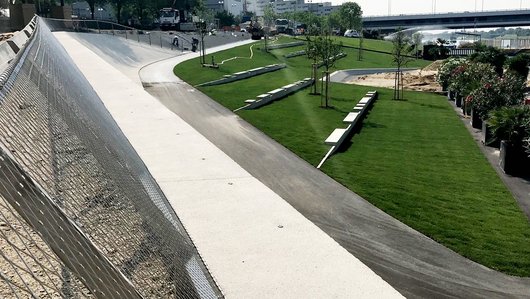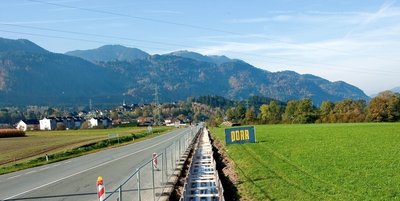
The Arnoldstein-Villach district heating pipeline
PORR has made an important contribution to climate protection with the construction of the district heating transport pipeline from Arnoldstein to Villach.
Thanks to seamless cooperation between the various companies and subsections, the new district heating pipeline running from the waste incineration plant in Arnoldstein to Villach was laid in just 16 months.
-
EmployerKELAG Energie & Wärme GmbH
-
ContractorPORR Bau GmbH, Niederlassung Kärnten/Osttirol
-
Order typeBaumeisterleistungen
-
Project typeCivil Engineering/Infrastructure . Utility line construction
-
Project scopeConstruction of a district heating transport pipeline
-
Order volume5.7 million euros
-
Construction start04/2017
-
Construction end08/2018
Background
Over the last ten years, the district heating system of the city of Villach has grown to encompass around 100km of pipeline. Another 17.5 km have now been added: the new pipeline transports around 100 million kilowatt hours of waste heat per year from the waste incineration plant in Arnoldstein to serve the city of Villach. KELAG Energie & Wärme GmbH commissioned PORR Bau GmbH to implement this project which, as well as doubling the fuel efficiency of the Arnoldstein waste incineration plant, will also replace the natural gas used for district heating in Villach and improve the overall emissions balance. In just under 16 months, PORR laid two steel pipes – one for flow and one for return – each with an internal diameter of 300mm and an external diameter of 500mm, including insulation. The water is transported along this pipeline from Arnoldstein to Villach at a temperature of up to 130 degrees Celsius and a pressure of up to 25 bar.
The order volume for the excavation and corrective maintenance work was around 5.7 million euros. The contract also comprised the construction of a ring connection from Villach/Warmbad to Villach/Auen, making the heat supply to the city on the River Drau even greener, more modern and more efficient.
44,000m³ of excavated material corresponds to around 6,000 3-axle-lorry loads, which would be 50km long if you lined them all up.
Maintaining the flow of traffic
The pipeline runs from the heat transfer station in Villach/Warmbad along Warmbader Straße and the B83, Kärntner Straße, via Fürnitz, Hart, Neuhaus and Pöckau to Arnoldstein. Great care had to be taken to minimise the impact on traffic throughout the construction period. Traffic along Warmbader Straße in Villach was regulated by a traffic light. The area around the main road, where the flow of traffic had to be maintained while the works were being carried out, was particularly tricky. Red, weather-resistant ground markings were applied to the carriageway for the duration of the construction work and removed again afterwards. The measures set out in the permit granted by the traffic authorities had to be strictly adhered to and were continuously monitored by the authorities.
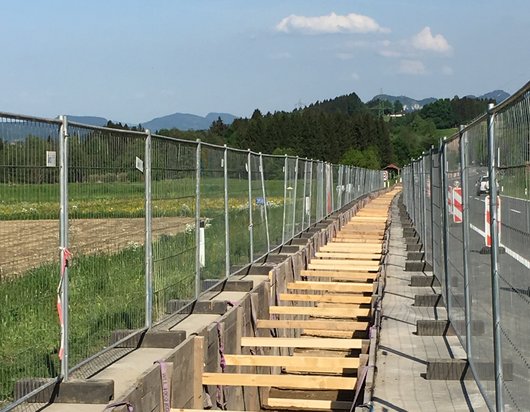

Hand in hand
On 17 April, PORR started on the construction work in Villach heading towards Arnoldstein. The work was carried out in sections, sometimes simultaneously, with five driving crews. Each crew was made up of two construction workers, two excavators and two lorries. A total of 3,000m of temporary fencing and shoring materials had to be kept available to secure and support the trench. Timber sheeting elements measuring 400/180/5cm were manufactured, fitted with 5/16cm or 8/16cm wales and 10/10cm struts, certified in terms of structural performance, and used to shore the trench.
One of the employer’s requirements was that the individual subsections not hinder each other in their work. Thanks to the excellent cooperation between the foremen, the various companies and subsections were able to work hand in hand. First to start work on the project was PORR with the excavation works. Once an approximately 200-300m trench had been excavated, the pipe-laying company immediately began inserting the pipes. PORR then moved the struts to allow the pipe to be lowered into the trench.
All the excavated material was transported to an interim storage location and stored separately according to whether it was to be used as backfill material or loose technical filler. The waste material was separated into inert materials, construction rubble and residual materials, and duly recycled.
Laying and compacting the bedding
Bedding material with a grain size of 0/4mm was used for the district heating pipes, the ductwork and the cables. To avoid any risk of damage to the pipes and cables by tilting the lorry sideways, the material was poured into the trench from an excavator bucket. The bedding was laid and tamped, and the sides and tops of the pipes were covered with backfill exactly as specified by the employer and the pipe supplier.
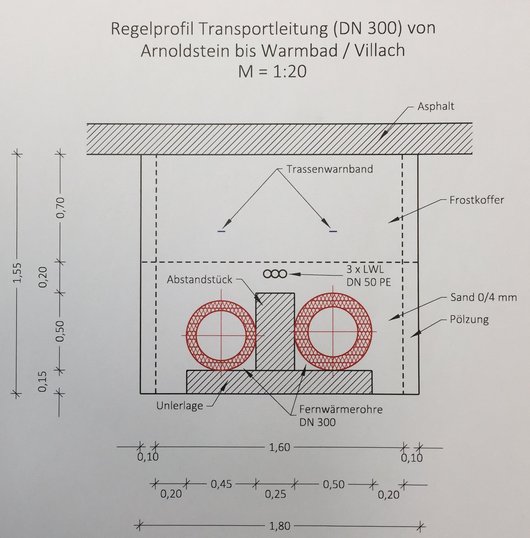

Lots of material excavated, but not much rock removed
Nearly a third of the 17,500m long pipeline was laid in undeveloped areas; the remainder was laid under municipal and national roads. Roughly 44,000m³ of material was excavated, which corresponds to about 6,000 3-axle lorry loads. If you lined all these lorries up, they would stretch for nearly 50km. Only a small amount of rock, 2% of the excavated spoil, had to be removed. PORR built ten inspection shafts with prefabricated flat concrete covers along the entire length of the pipeline and concreted abutments for five pipe bridges at the water crossings.
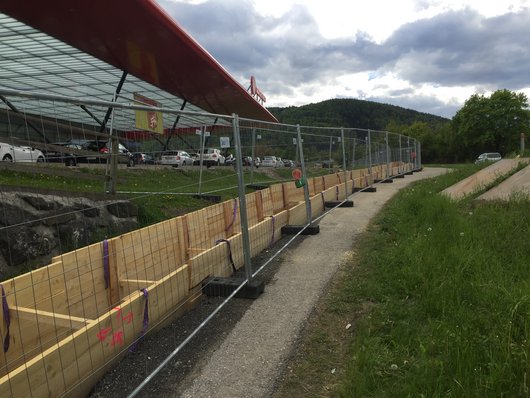

Technical data
-
Trench width1.80m
-
Trench depth1.70m to 3.20m
-
Amount of excavated material44.000m³
-
Bedding sand16.500m³
-
External pipe diameter500mm
-
Internal pipe diameter300mm
Handover according to schedule
Construction site supervision was carried out by KELAG’s local site supervisor and an external construction site coordinator. Special attention was paid to the construction of boundaries and lighting systems, the cleanliness of the construction site, and high occupational safety standards.
After a construction period of 16 months, the district heating pipeline went into operation on schedule in August 2018. Since then, thanks in part to PORR’s contribution, half of Villach’s heat requirements have been covered by waste heat from the Arnoldstein waste incineration plant. Natural gas is only used as a failure reserve and to cover peak demand.

